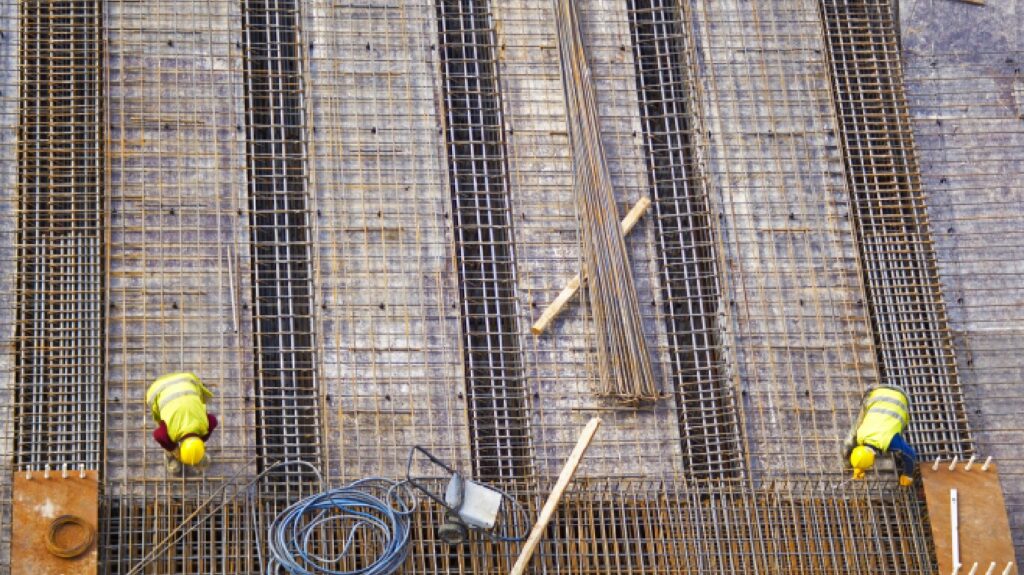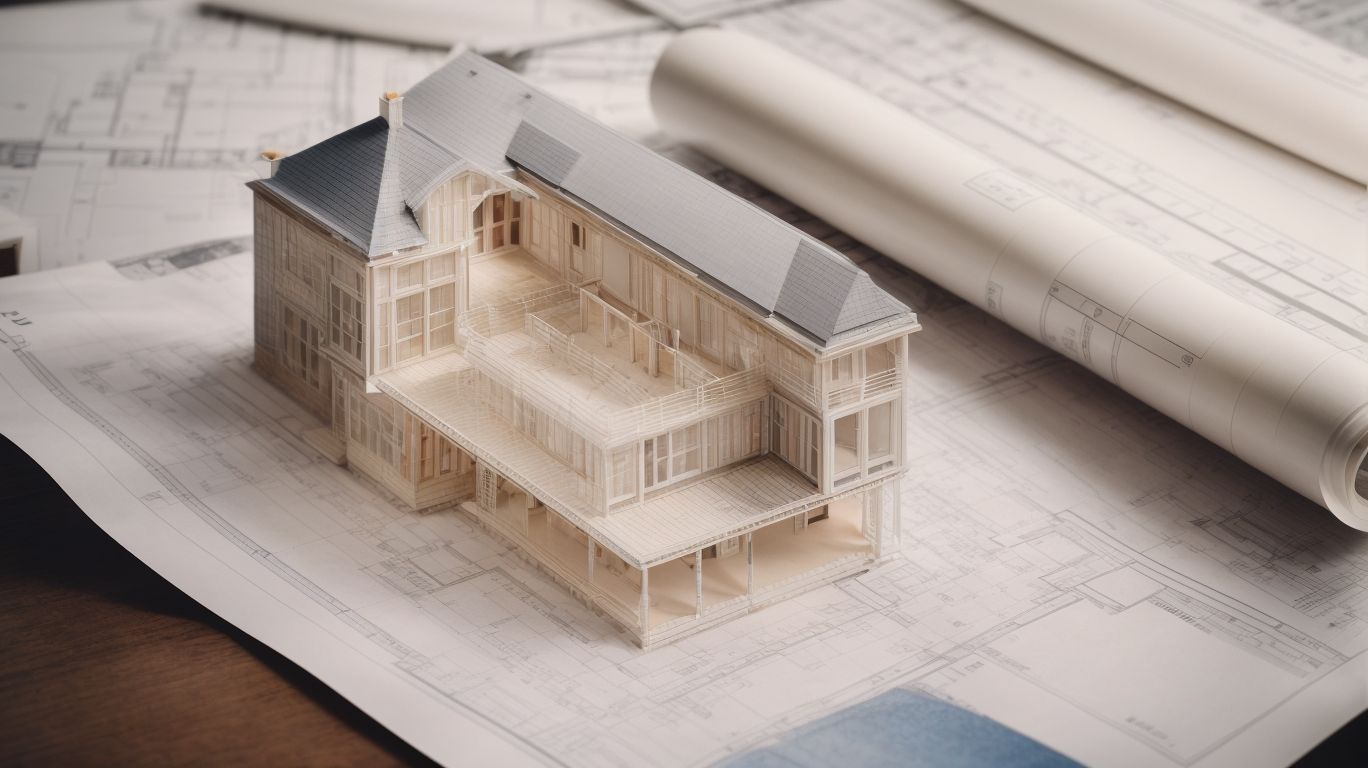
Steel vs. RCC: Choosing the Right Materials for Your Home Project
When it comes to building or renovating your home, choosing the right materials is crucial. Steel and Reinforced Concrete (RCC) are two popular choices for construction, each with its own unique qualities and benefits.
In this article, we will explore the types of steel used in construction, the components of RCC, and compare the two materials in terms of strength, durability, cost, construction time, design flexibility, and maintenance. We will also provide practical tips for deciding which material is best for your home project, taking into consideration your budget, structural requirements, construction timeline, aesthetics, and environmental factors.
Whether you’re a homeowner, architect, or builder, this article will help you make an informed decision for your next home project.
What is Steel?
Steel is a versatile and widely-used construction material known for its exceptional strength, durability, and sustainability.
It is a durable and corrosion-resistant material, making it a popular choice for constructing structures that can withstand heavy loads and harsh environments. Additionally, when recycled properly, steel can help minimize the environmental impact of construction by reducing the need for new raw materials and energy. This not only contributes to its sustainability, but also extends its lifespan and decreases the carbon footprint associated with producing new materials.
What are the Types of Steel used in Construction?
Various types of steel are utilized in construction, each tailored to specific structural engineering requirements and building applications.
Steel is a versatile material that comes in various variations, including carbon steel, alloy steel, and stainless steel. Carbon steel is often used for structural components like beams and columns due to its strength and durability.
Alloy steel, on the other hand, is ideal for applications that require high resistance to corrosion and wear, such as in bridges and pipelines. Meanwhile, stainless steel is known for its resistance to corrosion and staining, making it popular for architectural elements, handrails, and cladding. It’s crucial to understand the distinct properties and applications of each steel type to ensure the stability and longevity of construction projects.
What is Reinforced Concrete (RCC)?
Reinforced Concrete, commonly referred to as RCC, is a fundamental construction material renowned for its robustness, versatility in design, and exceptional seismic resistance.
Reinforced concrete is a popular choice for construction due to its ability to withstand heavy loads and deformation. This makes it ideal for high-rise buildings, bridges, tunnels, and dams.
The addition of steel reinforcement further strengthens its tensile strength, making it highly resistant to lateral forces during earthquakes. This makes reinforced concrete a highly desirable material for structures in seismic areas, combining durability with seismic resilience.
What are the Components of RCC?
The components of Reinforced Concrete (RCC) encompass a blend of high-quality concrete and strategically placed steel reinforcements, crucial for its structural integrity and performance in diverse construction techniques.
This interplay between concrete and steel reinforcements is integral to the strength of RCC structures. The concrete provides compressive strength, while the steel reinforcements add tensile strength, addressing the shortcomings of each material.
By effectively working together, they enable RCC to withstand heavy loads and varying environmental conditions. The incorporation of steel reinforcements allows for greater flexibility in construction designs, reinforcing beams, columns, slabs, and other components to ensure durability and stability.
Comparing Steel and RCC
When comparing Steel and Reinforced Concrete (RCC) for construction projects, it is essential to evaluate their respective strengths, durability, cost implications, and the advantages and disadvantages they offer in building applications.
Steel is known for its exceptional strength and ductility, making it a preferred choice for high-rise buildings and structures that require long spans.
On the other hand, RCC offers excellent compressive strength, making it suitable for constructing load-bearing members and foundations.
While steel is often praised for its versatility and speed of construction, RCC stands out for its fire resistance and cost-effectiveness, especially in projects with a focus on formwork and labor considerations.
Strength and Durability
The strength and durability of both Steel and Reinforced Concrete (RCC) play pivotal roles in determining their suitability for construction projects. These factors include seismic resistance, load-bearing capacity, and long-term structural integrity.
These materials are renowned for their exceptional load-bearing capabilities. Steel is hailed for its high tensile strength, while RCC is lauded for its compression resistance. Both are known to withstand seismic movements, making them ideal for earthquake-prone regions.
Their long-term performance is evident in the enduring structures that have withstood the test of time. This showcases their resilience to environmental and usage factors.
Cost
The cost considerations associated with Steel and Reinforced Concrete (RCC) are critical factors in construction decision-making, influenced by material prices, construction techniques, and adherence to industry standards and regulations.
Material prices for steel and RCC can significantly impact the overall project budget. Fluctuations in the cost of raw materials directly affect the bottom line, making it a crucial consideration for construction projects.
Construction techniques also play a crucial role in determining the long-term structural integrity and maintenance costs. Adherence to industry standards and regulations ensures compliance with safety and quality benchmarks, which can have significant cost implications in the long run.
Therefore, balancing these factors is essential for making informed decisions in construction projects.
Construction Time
Construction time considerations for both Steel and Reinforced Concrete (RCC) involve evaluating the efficiency of construction methods, technological advancements, and the overall project management requirements to ensure timely completion.
Efficient construction methods, such as prefabrication and modular construction, play a crucial role in reducing the construction time for steel structures. Similarly, in the case of RCC, advancements in formwork systems and construction equipment have significantly impacted the speed of construction.
Technological advancements like Building Information Modeling (BIM) and project management software have improved coordination and scheduling, enhancing the overall efficiency of construction projects. Project managers must carefully consider these factors to optimize construction time and ensure timely project delivery.
Design Flexibility
The design flexibility offered by Steel and Reinforced Concrete (RCC) presents unique opportunities in architecture and material selection, allowing for innovative designs, structural integrity, and customization based on project requirements.
Steel and RCC materials have a wide range of applications in architectural projects, including high-rise buildings, industrial facilities, and residential complexes. Their versatility allows for sleek, contemporary designs with long, unsupported spans. Additionally, RCC provides excellent structural strength for foundations and heavy load-bearing elements, making it suitable for diverse design requirements.
The integration of these materials in architecture opens doors to creative approaches that combine aesthetics with functionality. This provides architects with endless possibilities for creating striking, durable, and sustainable structures.
Maintenance
Maintenance considerations for Steel and Reinforced Concrete (RCC) involve adherence to construction industry standards, building codes, and the implementation of effective maintenance practices to ensure the long-term structural integrity and performance of construction projects.
This adherence requires periodic inspections, routine maintenance activities, and timely repairs to address any signs of corrosion, deterioration, or structural weaknesses.
For steel structures, industry standards recommend regular coatings or corrosion protection to prevent rusting and maintain structural strength. Similarly, for RCC, following building codes for proper curing during construction and periodic assessment for cracks and spalling are imperative.
Effective maintenance practices also include proactive measures such as drainage management to prevent water accumulation that can lead to corrosion and deterioration.
Which Material is Best for Your Home Project?
When deciding on the best material for your home project, whether residential or commercial construction, it is crucial to assess the unique material properties of Steel and Reinforced Concrete (RCC) to ensure optimal structural performance and durability.
Steel is known for its exceptional strength-to-weight ratio, making it an ideal choice for structural components and framing. Its ductility allows for flexibility in design, enabling innovative architectural solutions.
On the other hand, RCC provides excellent compressive strength and fire resistance, making it suitable for foundations, slabs, and load-bearing walls. Understanding these distinct properties of steel and RCC is essential for selecting the most suitable material for your construction project.
Consider Your Budget
Consideration of budgetary constraints is pivotal when choosing between Steel and Reinforced Concrete (RCC) for your home project. This influences construction decision-making and material selection based on cost-effectiveness and long-term value.
When choosing between steel and RCC, several factors must be considered. These include initial cost, maintenance expenses, and durability. Despite steel’s higher initial cost, its strength and versatility often make it a more cost-effective option in the long run. On the other hand, RCC offers durability and requires less maintenance, making it a valuable long-term investment. Striking a balance between these considerations is crucial to selecting a material that meets budgetary constraints and long-term project requirements.
Assess the Structural Requirements
Assessing the specific structural requirements of your home project is essential in determining whether Steel or Reinforced Concrete (RCC) aligns with the load-bearing capacities, design flexibility, and overall structural engineering needs of the construction.
When it comes to load-bearing capabilities, steel stands out for its high strength-to-weight ratio. This makes it a great choice for structures that require large open spaces without the need for excessive support columns.
RCC, on the other hand, offers versatility in design and can accommodate complex or unique architectural features. However, structural engineering considerations are essential in determining the most suitable material. Factors like seismic resistance, environmental impact, and long-term durability must be taken into account.
Ultimately, both steel and RCC have their unique advantages and considerations when meeting the structural requirements of a home project.
Evaluate the Construction Timeline
Evaluating the construction timeline and project planning is crucial when deliberating between Steel and Reinforced Concrete (RCC) for your home project. This ensures alignment with construction schedules, project management, and overall construction planning.
Efficient project management is imperative to adhere to construction timelines, influencing the material selection for home projects.
A detailed understanding of the construction schedule helps in determining if steel or RCC is more suitable for the project. Factors such as material availability, construction speed, and structural requirements play a pivotal role in making the right choice.
Integrating the selected material seamlessly into the project planning ensures smooth execution and timely completion of the construction project.
Think About Aesthetics and Design
Considering the aesthetics and design preferences is pivotal when choosing between Steel and Reinforced Concrete (RCC) for your home project. These materials offer architectural creativity, design flexibility, and the potential for visually appealing construction outcomes.
When designing a living space, the material chosen plays a crucial role in determining its overall appearance and feel. Whether you prefer the sleek, modern look of steel or the timeless, sturdy feel of RCC, the material serves as the foundation for the project’s aesthetic direction. Architects and designers carefully consider the visual impact of materials, taking into account factors such as texture, color, and form. This ensures that the chosen material harmonizes with the surrounding environment and contributes to a cohesive and appealing design.
Consider the Climate and Environmental Factors
Considering the climate and environmental factors is imperative when selecting between Steel and Reinforced Concrete (RCC) for your home project, emphasizing sustainability, environmental impact, and material suitability in diverse climatic conditions.
When choosing materials for construction projects, it’s important to consider their durability in various weather conditions. This includes factors such as corrosion resistance, thermal conductivity, and energy efficiency, which can greatly impact the longevity and efficiency of a home. Additionally, it’s crucial to assess the sourcing of materials and their environmental impact, including their carbon footprint and recyclability. By prioritizing these considerations, homeowners can make informed decisions that not only benefit the environment but also contribute to the sustainability of their home.




No Comments